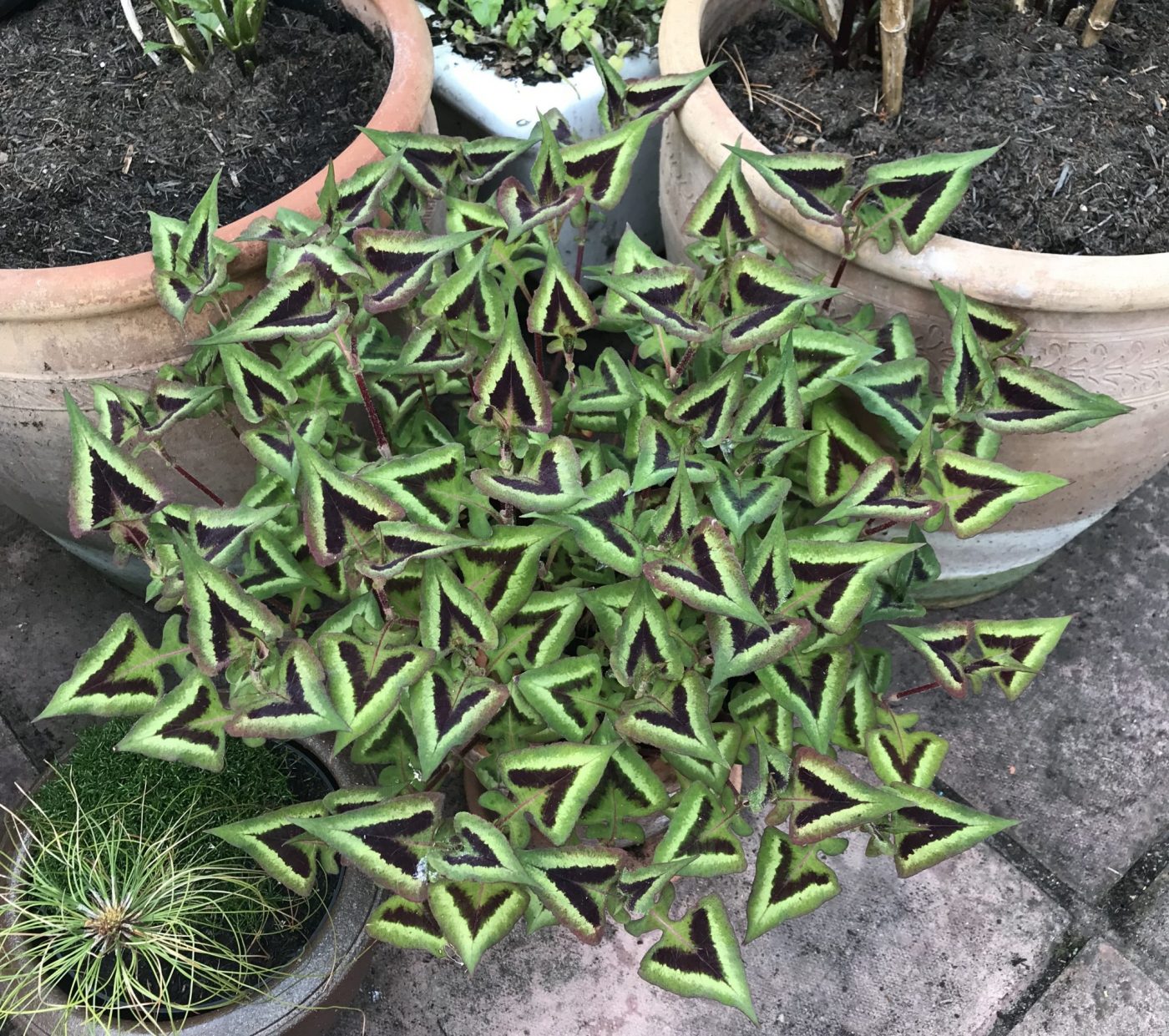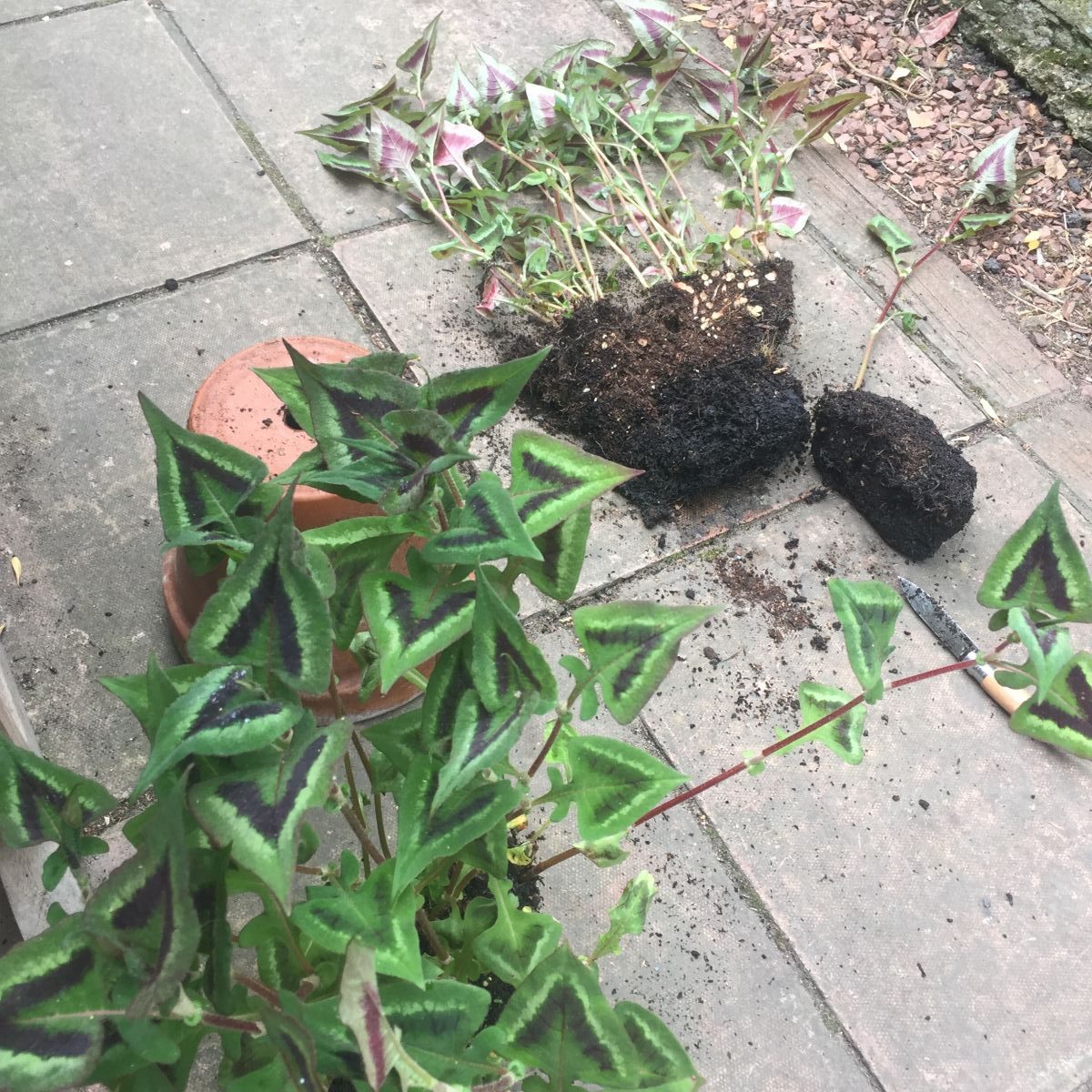If there’s one plant I can guarantee you’ll see more of this year it’s Persicaria runcinata ‘Purple Fantasy’. One of the foliage Persicaria tribe – this one a cultivar of a species native to the eastern Himalayas – it’s easy to grow in full sun to part shade and creates an exciting, attention grabbing focal point.
I’ve grown Persicaria ‘Purple Fantasy’ in our little garden for a good number of years now and it’s one of two plants on our NGS open days that every single person asks about. Fairly rare a number of years ago I now see it being offered by mainstream plant companies and it’s been planted in huge swathes in RHS Wisley’s new tropical garden.

The main things to know about the plant are that it grows best in some sun though can handle a fair amount of shade. Persicaria are tough, vigorous plants, after all they are the knotweed family, related to the feared but much bigger Japanese knotweed. It’s a hardy plant too, dying back in winter, with new shoots emerging with the warmth of April until frosts.
While many Persicaria are grown for their flowers, this and others like P. ‘Purple Dragon’ are grown for their leaves. They do flower but they’re tiny little white things and best ignored or removed. By the time they flower the plant can be quite leggy and tall (50cm), and even begin to lose some of those dark chevrons as they fade to green. At this point, I cut it down almost to the base and it will spring back within a couple of weeks with fresh flower-free foliage.
So tough is this Persicaria that you can slice out a chunk to form a new plant at any point of the year and it won’t bat a leaf. From a tiny one shoot plant, by the following spring you will have a colony of shoots at least 50cm diameter. By the following year four times as much. It’s quite a vigorous spreader but easy to control by digging out large chunks to reduce its size in winter or early spring and binning (or giving away). From my one tiny plant I have started entirely new colonies in about five of my garden designs for clients.

As you can see above, it grows well in pots of any size as long as you can keep up with the watering, Persicaria never like to dry out though I find this one is fairly drought tolerant, wilting before any crisping happens. I’ve grown mine in the same 25cm pot for over four years now simply by unpotting it in early spring, slicing into quarters and repotting one quarter for that year in peat free compost.
It’s a fab, weed smothering and low maintenance plant for adding to a tropical or foliage garden.




You may remember (but probably won’t) that a couple of years ago I asked you what “this mystery plant” was and you identified it. You did warn me that it might be invasive. I now have 3 thriving plants, not in containers but in borders. They’re well behaved (so far). Which is probably why I haven’t yet had the courage to split them to make plants for someone else. FWIW I have a theory that if the foliage pattern is strong, then the plant is happy. If it’s a bit “soft and iffy” then the plant isn’t. I base this thought on plant 4.
Can you recommend companion plants for the Purple Fantasy Persicaria? I planted it on the eastern edge of a woodlands garden I am creating. It will get full sun to partial shade. I reside in zone 6.
Unfortunately, I’ve purchased and planted this stunning Persicaria twice and both times it did not make i through the winter. We’re in zone 7a in northern Italy.